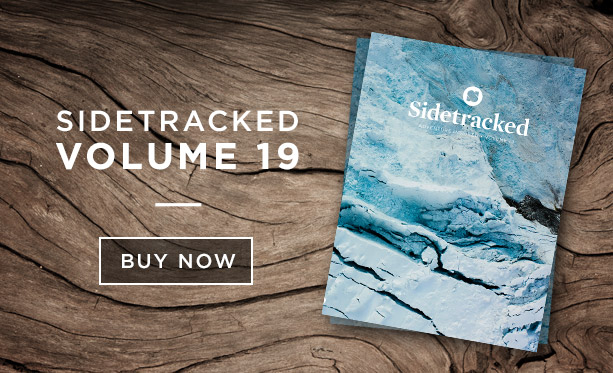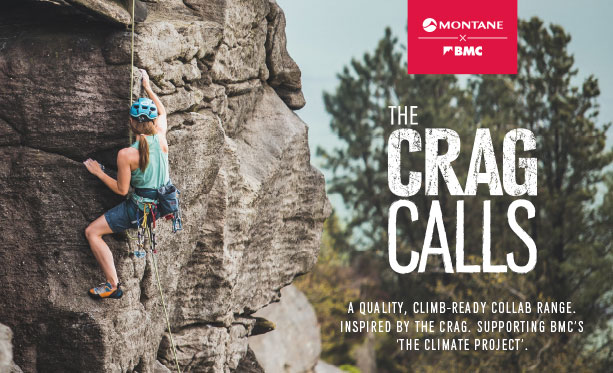Running Northern Patagonia – A Photo Essay
Inspiration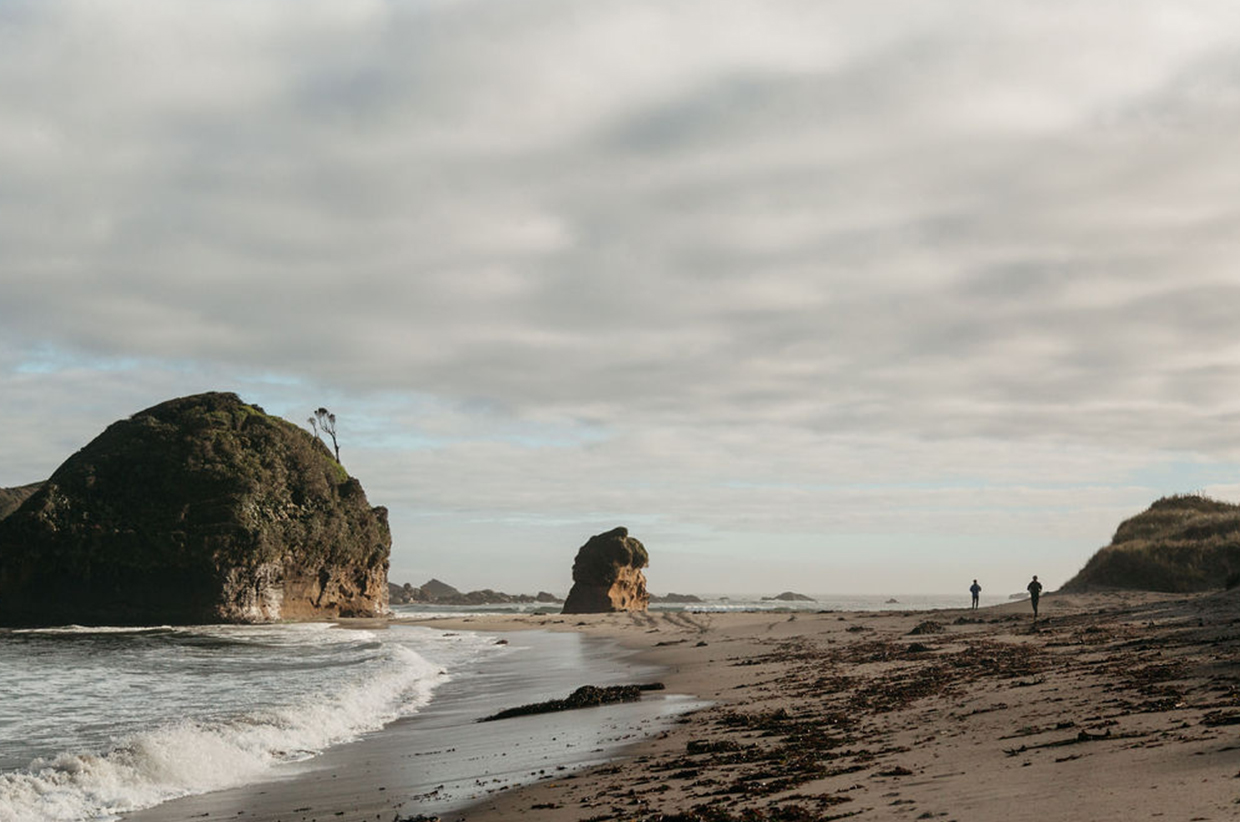
Why do we run? Why do we travel? These are the questions posed by Daniel Almazan Klinckwort, photographer and co-founder of trail-running adventure outfit Aire Libre Running, as he runs through Chilean Patagonia. It’s a journey that is at once exhausting, enlightening and life-affirming.
The first stop on our running adventure was Chepu, a peaceful rural village located on the northern coast of Chiloé Island. Doña Enriqueta and Don Fernando were our hosts for the night. At dinner, we told them about our endeavour – which was to attempt to plan a running route through northern Patagonia, with the aim of reconnecting humans to nature – and they immediately pulled out a map of the region, drawn by their five-year-old niece, and pointed to a penguin sanctuary located across a sea of pure wilderness and untouched beaches.
‘That’s where you should run to,’ they said. ‘We have a boat. Fernando will take you across the river at dawn to the trailhead. Follow the main trail and stay close to the ocean, then you’ll cross three beaches and get to a tiny fishing village. Behind the houses you’ll find the penguins, then, head back.’
This was to become the first route of our running expedition to the Chilean Lake District. A few hours earlier, I had flown in from Santiago to Puerto Montt, otherwise known as ‘the gateway to Patagonia’. There, I met with local runners Polo and Matias, who would join me on an adventure to trace the routes, taste the food, and discover the cultural treasures of northern Patagonia on a running retreat with Aire Libre.

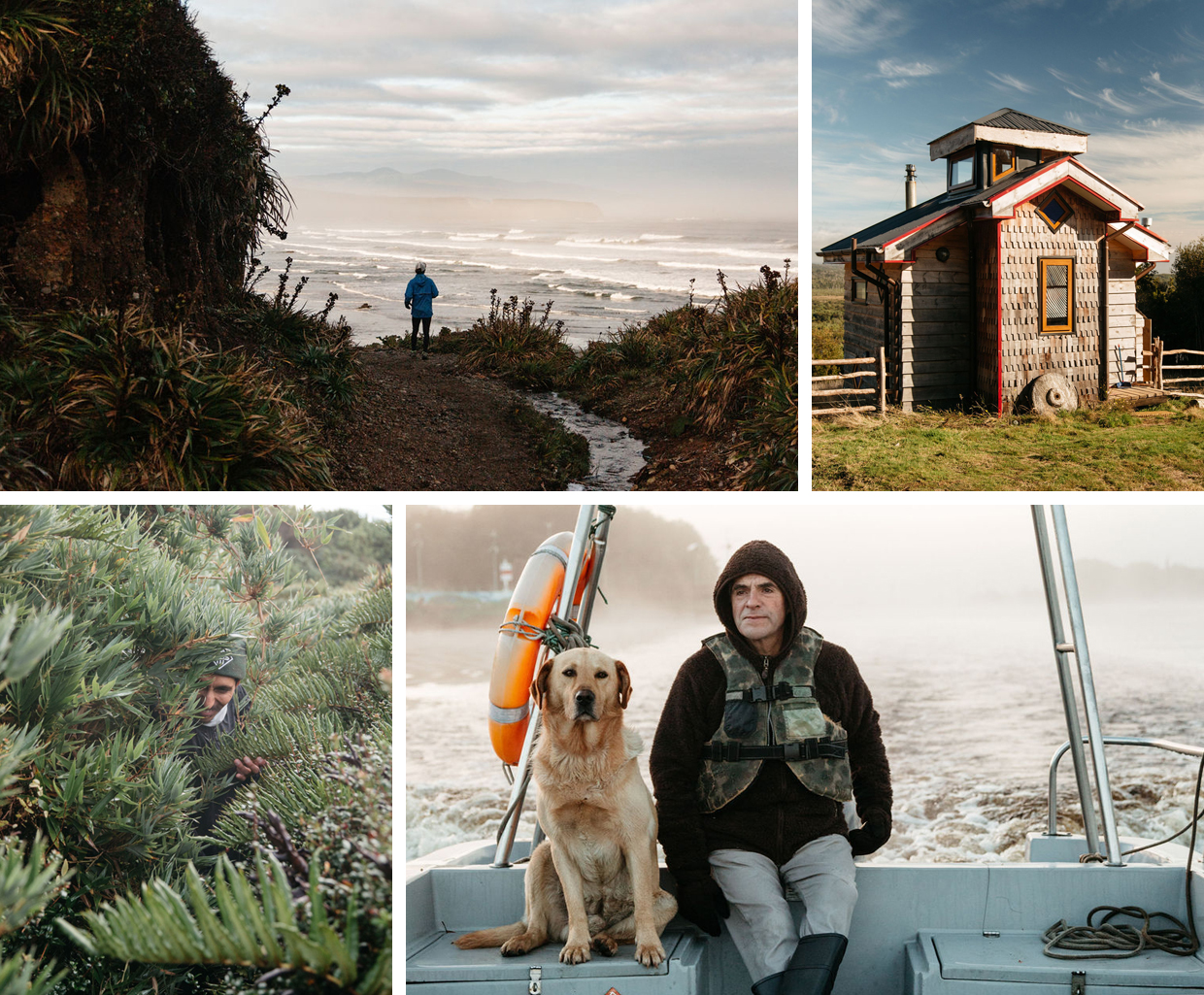
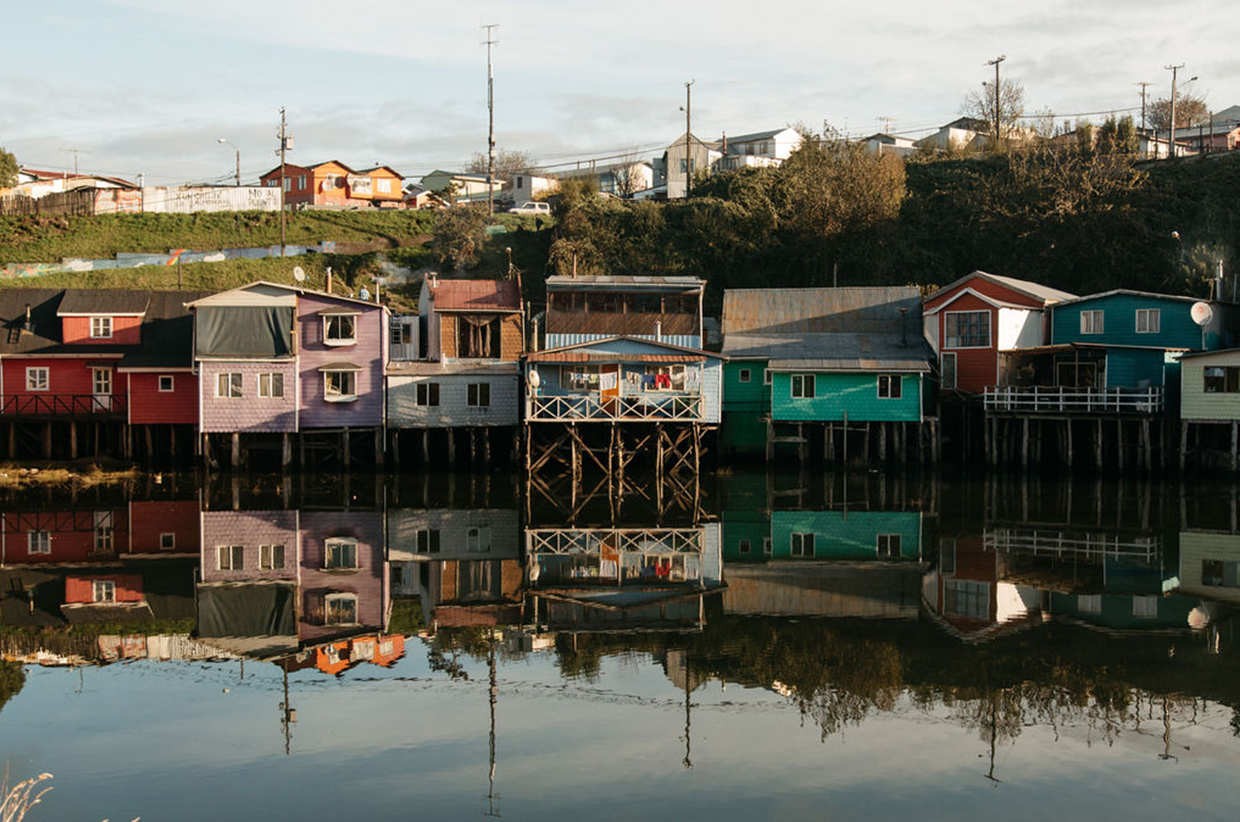
At 6.00am the next morning, instead of driving down with Fernando, we ran down to the dock from the front door of the house. It was still dark, and after about 2km we reached the river, where Fernando was waiting for us with his dog, Gaspar. We clambered aboard the boat, mesmerised by the mystical landscape that surrounded us.
We set out on a journey along and across the Anguai River. The mist rising from the water was pure magic. I remember the sun peeking out from the horizon, and the birds flying effortlessly, painting thin lines as they glided above the pink and blue water. Everything was in balance – the three of us sitting there in silence, aware and present, contemplating the perfect preface to our run, and to the adventure that waited for us in the days to come. Once we reached the dock from where the trail departed, Fernando drove off into the morning mist wishing us luck.
Behind the dock, all we could see was a deep, lush Valdivian rainforest. It felt almost prehistoric. We headed inside. What came next was a rough, leg-shattering run across untouched rainforests and virgin beaches. The ‘main trail’ that Enriqueta had referred to the night before was non-existent. There were hundreds of small, mud-filled trails going in every direction and in some parts it was pure cross-country running. We kept as close to the ocean as possible, making sure we could hear the waves.
‘This is it. This is why we do it,’ I thought while descending to the first beach. What a privilege it is to get lost in places like this through a sport as humble, human, and primitive as running.
Having reached the penguin sanctuary and fishermen’s huts, we headed back. A total of 18km later we made it back to the dock where Fernando and Gaspar were waiting to take us back to Enriqueta, who had prepared a nourishing, home-made meal using fresh produce from their back yard, and was eagerly waiting to hear about the run. After brunch we packed our bags and hugged our hosts goodbye.
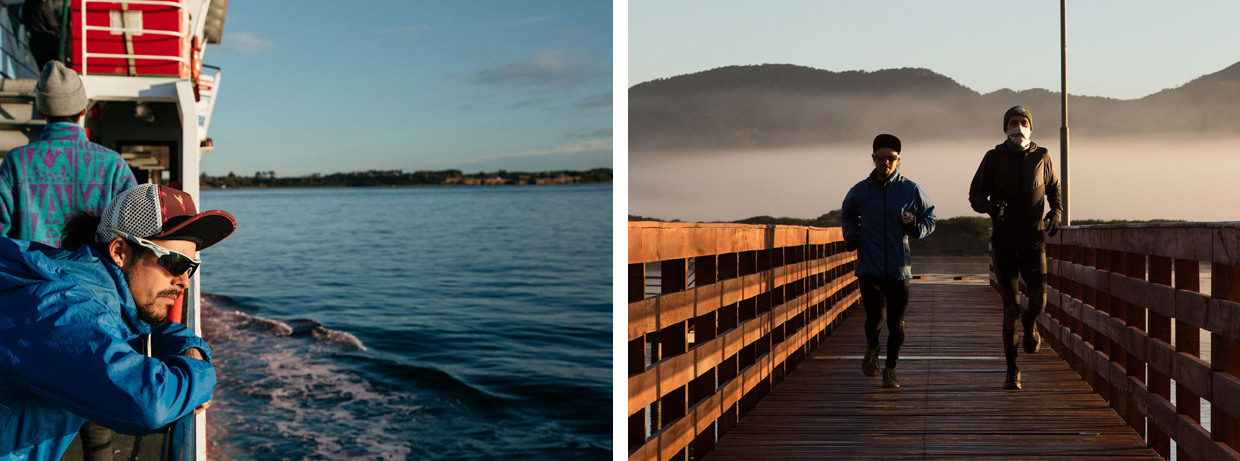
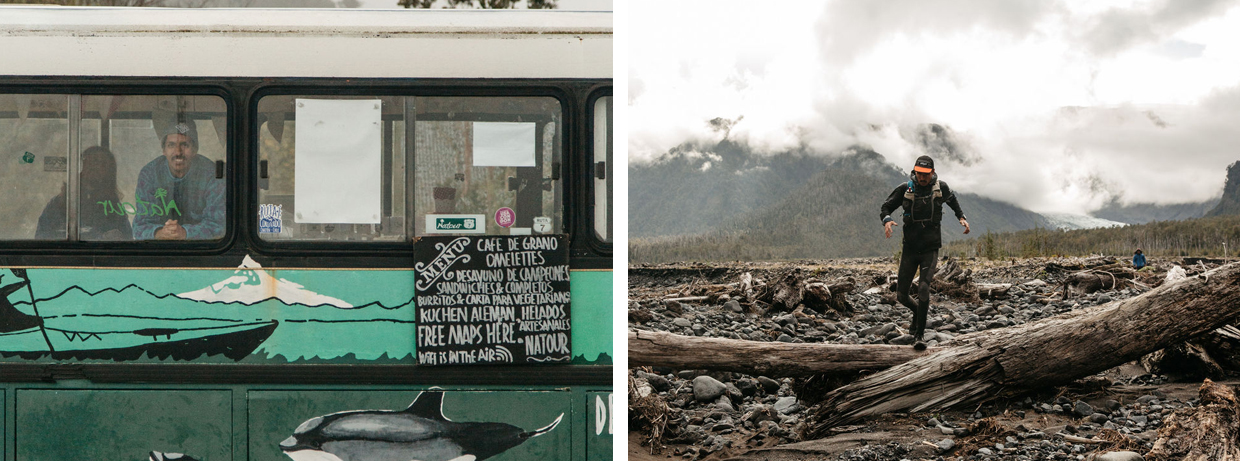
This first experience set the bar for what lay ahead on this adventure. It reminded me of the value of what we do at Aire Libre. The value of meeting new people and establishing true connections with real locals while travelling. Of being open and receptive, and to trust – to trust your instincts and trust those who along the way, earn your trust. The value of being fearless and adventurous. Of getting lost with the excuse of getting to know a place deeply and thoroughly. Of being grateful to the people who are there for you by bringing value into their lives through sharing your experience, and through showing openness, friendliness, and respect.
After Chepu, we drove across the island to the town of Castro, the province’s capital, where locals opened their hearts and minds to us once again. Then, we went onwards to Cucao, where we feasted on Chiloé’s famous dish curanto al hoyo. Afterwards, we traced the second route of the trip, which took us to Huentemó and Cole-Cole Bay, across rivers, farms, and fields of grazing cows with stunning views of the South Pacific Ocean.
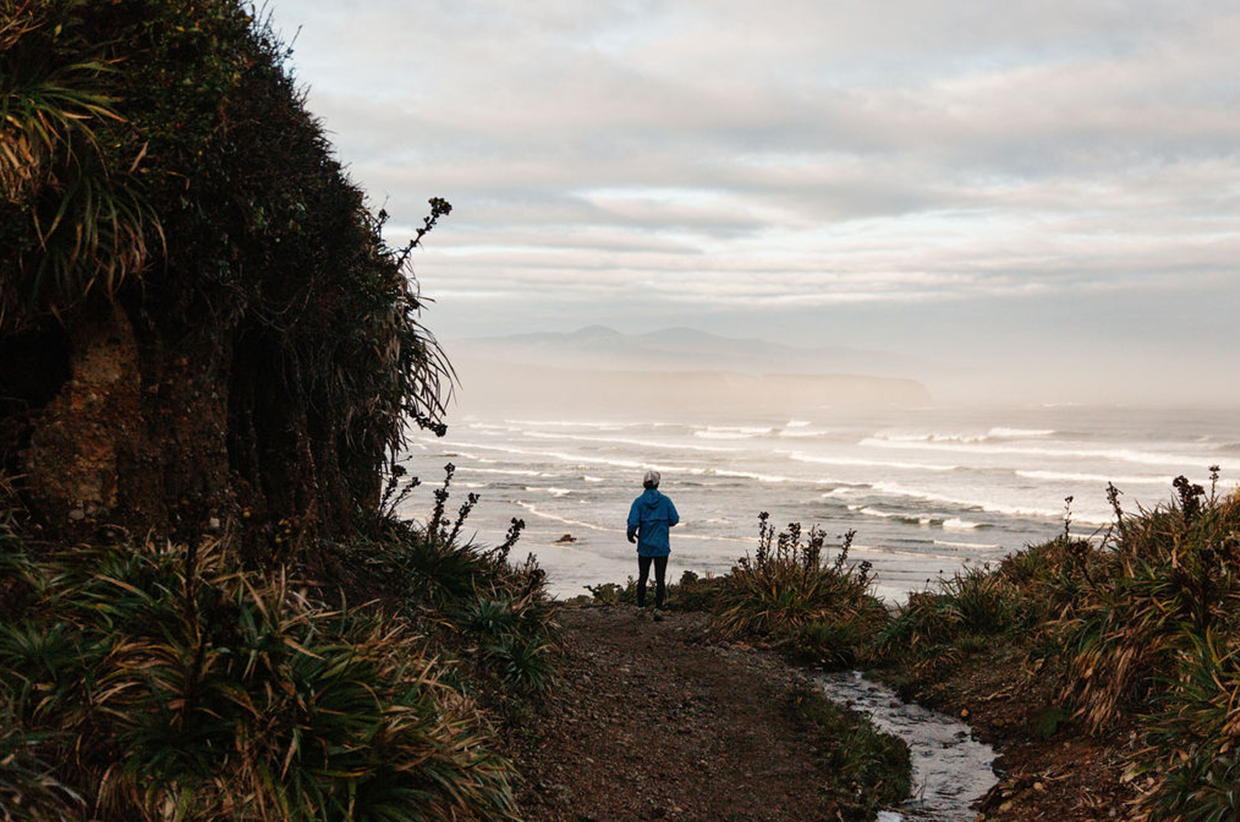
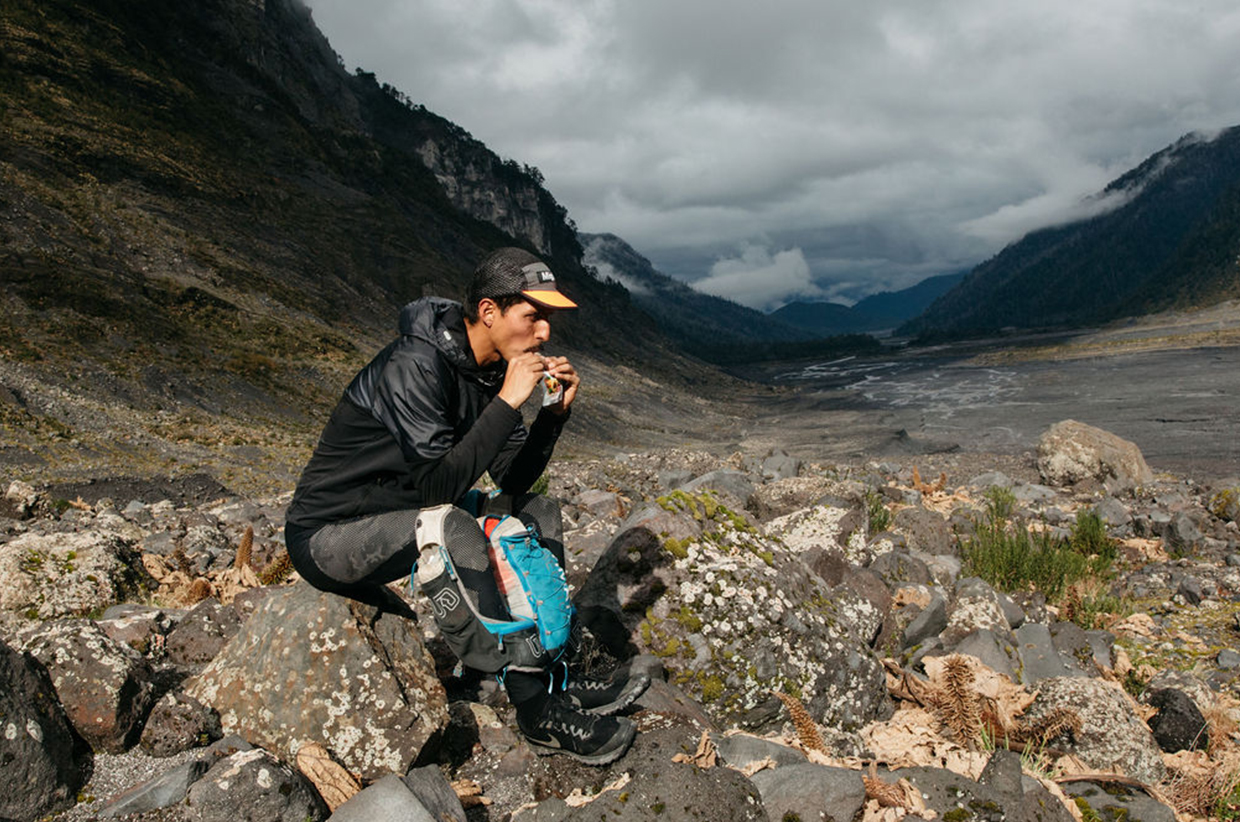
Later in the trip, we set sail across the Chiloé Archipelago and the Gulf of Corcovado, leaving Chiloé Island behind us to reach the volcano-shattered town of Chaitén, which served as the base for our 30km running expedition to reach the Yelcho Glacier, located at the heart of Pumalín Park. The protected area is an 988,422-acre-wide nature reserve, previously owned and protected by the late Douglas Thompkins, founder of The North Face, who gave it to the Chilean Government in 2017 – a transaction that made history as the largest gift of private land to any South American government.
Chaitén was otherworldly and mystical. Back in 2008, the Chaitén Volcano erupted violently after almost 9,000 years of inactivity, shattering a big part of the town and driving many of its inhabitants away. Today, the town is still recovering, struggling to come back to life.
After Chaitén, we drove north along the world-famous Carretera Austral, one of the most breathtaking scenic routes in the world. We crossed the black-and-white lakes and the Chaitén Volcano, reaching Caleta Gonzalo to cross the Comau Fjord into Hornopirén, where a series of hot springs and hot tubs were waiting to ease our shattered legs.
The emptiness of these places was surreal. Since crossing over from Chiloé we had encountered only a few adventurous souls. Hornopirén, just like Chaitén, felt like a ghost town. It was mid May, the second month of the rainy season. The busy summer months were behind us and ahead lay only wet, cold, and snowy winter days.
The next morning we left early, aiming to make it to the vicinity of the Osorno Volcano with enough time for the last run of the trip. We sailed across the Reloncaví Estuary and kept on driving north until we made it to Ensenada, the northern end of the Carretera Austral. The road to La Picada, from where the run would depart, gave us glimpses of what lay ahead. We could see the volcano far away, hiding behind stormy, electric clouds.
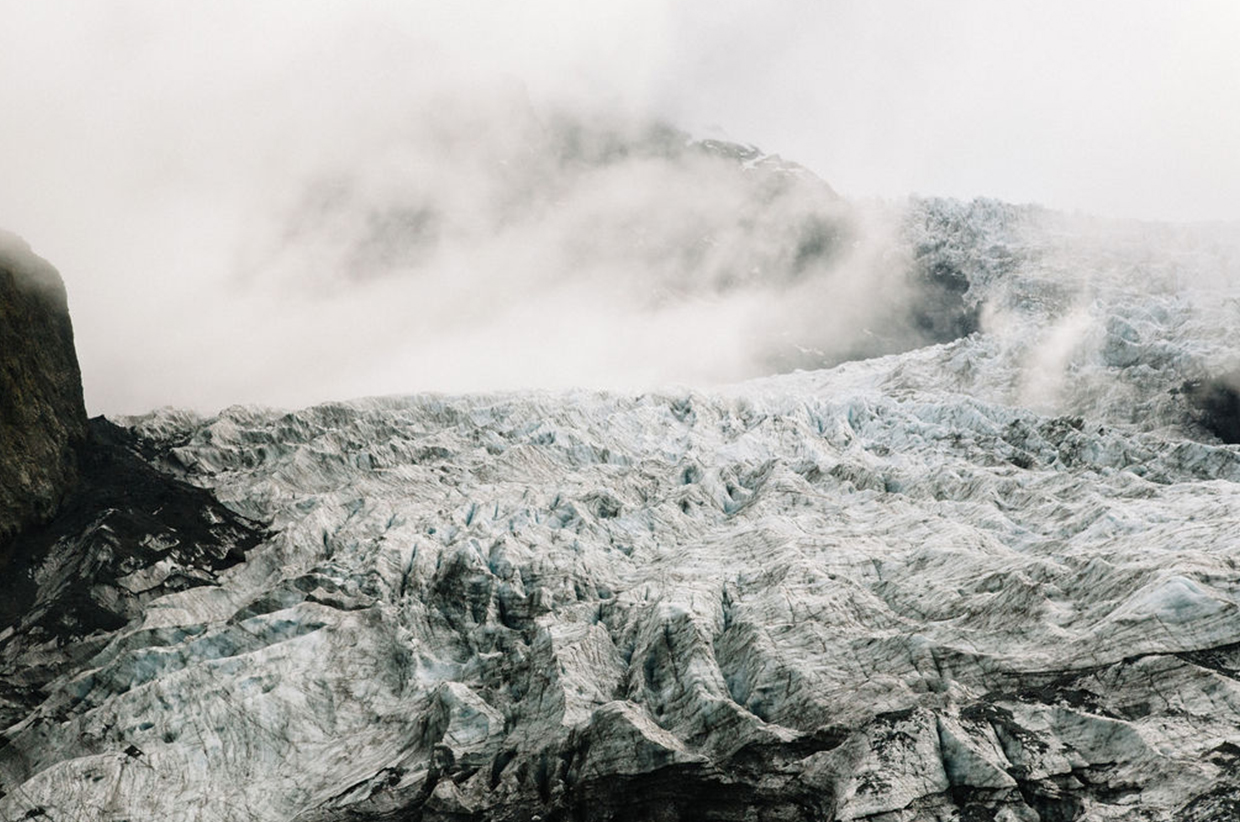
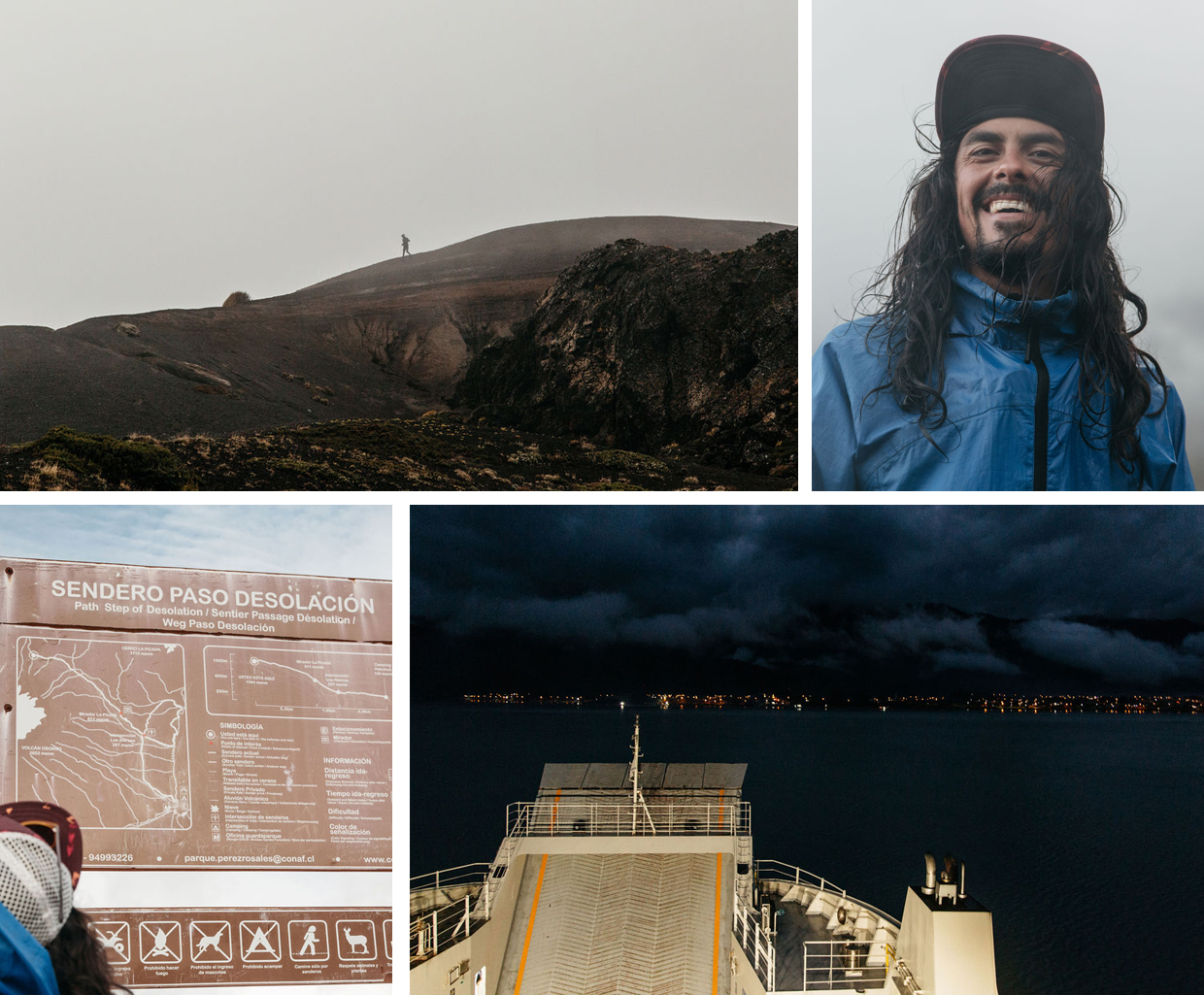
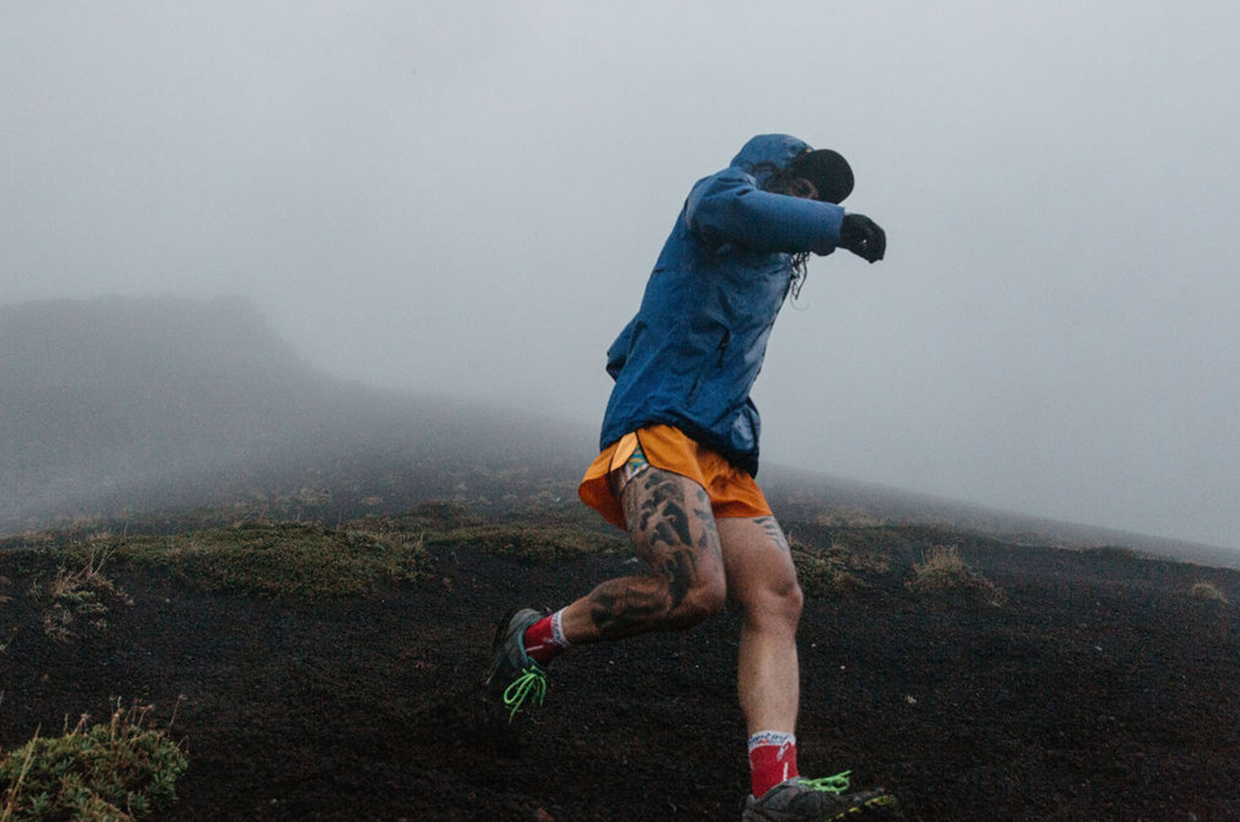
This run was the final hit we knew we couldn’t leave without; a wet and windy, 22km cross-country expedition across black, lava-filled landscapes, that took us to the base of the Osorno Volcano and its surroundings, ending at the Saltos de Petrohué waterfalls.
Halfway in, this had become the most challenging run of the trip. With no clear trails in sight and only our instincts to guide us, we ascended 1,000m of deep, sandy terrain, pushing our worn-out legs and blistered feet one last time through the volcanic rocks, the heavy rain and the impetuous crosswinds that brought us to near exhaustion.
We spotted puma tracks on the ground at the highest point. Blinded by the thick mist, we struggled to find a way down the other side. We ran down a slope that brought us to a small river, which we followed for a while, until forced to cross its freezing waters and exit through the surrounding dark sand mounds, eventually finding what looked like a trail.
There’s something extremely powerful about exploring a place and its culture through running. It’s humbling. It tunes you into the frequency of your surroundings and makes you part of them, rather than a mere passer-by or intruder.
Like pilgrimages, runs like these can be a symbol of respect and love for the land and the people that inhabit it, when done with the right intentions. A sacrifice, in a way, that uncovers our vulnerability before Mother Earth, allowing for a true and profound connection with ourselves and nature that is usually unavailable in modern urban life.
Those 10 days were a celebration of being alive through movement, culture, cuisine, companionship, and a profound connection to Mother Earth. An adventure into the unknown with the purpose of designing a trip that could reunite modern humans with nature, connecting people from different cultures to create awareness, and a shift in perspective to lead to long-lasting positive change both for the people involved and the planet.
Words and Photography by Daniel Almazan Klinckwort.
Aire Libre Running is a specialised experience agency that aims to inspire runners from around the world to be more active, healthy and spiritually connected through immersive travel experiences that connect participants to new cultures and places, that are hidden in remote natural landscapes.
Website: airelibre.run
Instagram: @airelibre.run
Facebook: /airelibre.run



